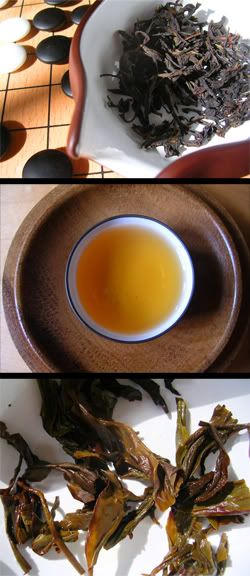Given that I'm still at the conference, here's a review from just before I left, back when I had access to proper teaware. Having said that, the water up here is legendary in England for its purity, and so I look forward to trying it out a little more with the small teapot in my room.
Today, it's a rougui [cinnamon] wulong, from TeaCuppa - thanks, Lisa.
Caledonian Springs @ 90C in 12cl nongxiang pot; ~3-4g of leaf; 1 rinse
 Dry leaves:
Dry leaves:Long and twisted, with some obvious green to be seen amongst the richer chocolate-browns. A sweet, buttery aroma of signature Mainland wulong leaves - robust as ever.
10s, 15s, 20s, 30s:
Radiant orange soup, with a little tip-fur. It has been rather a while since I had a tea quite as aromatic as this: it is the classically technical progression from brief beidixiang, to longer mid-scent, to the final enduring lengxiang. The beidixiang is sweet melon, becoming creamy butter after one breath, then settling into the rich caramel lengxiang. Really rather splendid, and a textbook case for learning the aroma process in a wenxiangbei.
The flavour is unexpectedly fruity, which should not have come as a surprise given the green hue of some of the dry leaves. This is not dissimilar to a dancong, with a robust wulong character of Wuyi. The oxidised fruits in the foretaste have good patience, and eventually hand over to a satisfying, sweet huigan. Lo and behold, sitting in the nose while the huigan is doing its business, is the cinnamon. At least it's worthy of its name.
This tea didn't last long, but was really rather accomplished for the first few infusions. After that, it settled down into the reassuring character of "tea". The roast is particularly well-integrated into the flavour, happily not dominating the proceedings as it is wont to do in lesser teas.
Wet leaves:
A hand-picked assortment from 2cm to 5cm, nearly all segmented. Bright red edges reveal the source of the fruitiness.
Overall:
Short, but very pleasant. This is a great tea to observe the three-stage process in the wenxiangbei, consisting of three distinct and obvious stages.

No comments:
Post a Comment
(and thanks)